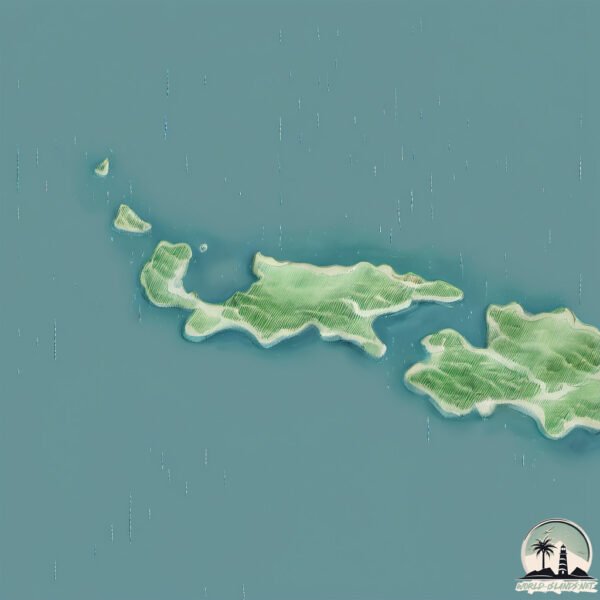Soijak-to

Welcome to Soijak-to, a Continental island in the Yellow Sea, part of the majestic Pacific Ocean. This guide offers a comprehensive overview of what makes Soijak-to unique – from its geography and climate to its population, infrastructure, and beyond. Dive into the details:
- Geography and Size: Explore the island’s size and location.
- Climate and Weather: Weather patterns and temperature.
- Topography and Nature: Uncover the natural wonders of the island.
- Infrastructure and Travelling: Insights on reaching, staying, and making the most of your visit.
- News and Headlines: Latest News.
Geography and size of Soijak-to
Size: 1.684 km²
Coastline: 11 km
Ocean: Pacific Ocean
Sea: Yellow Sea
Continent: Asia
Soijak-to is a Small Island spanning 1.7 km² with a coastline of 11 km.
Archipel: –
Tectonic Plate: Amur – A minor tectonic plate in the region of the Amur River at the border of Russia and China, involved in complex interactions with the Pacific and Eurasian plates.
The geographic heart of the island is pinpointed at these coordinates:
Latitude: 37.18262109 / Longitude: 126.23076937
Climate and weather of Soijak-to
Climate Zone: Continental
Climate Details: Monsoon-Influenced Hot-Summer Humid Continental Climate
Temperature: Hot Summer
Climate Characteristics: Hot summers with monsoon rains, contrasting with dry, cold winters. Typical of east Asian continental edges.
Topography and nature of Soijak-to
Timezone: UTC+09:00
Timezone places: Asia/Tokyo
Max. Elevation: 39 m
Mean Elevation: 23 m
Vegetation: Deciduous Broadleaf Forest
Tree Coverage: 42%
The mean elevation is 23 m. The highest elevation on the island reaches approximately 39 meters above sea level. The island is characterized by Plains: Flat, low-lying lands characterized by a maximum elevation of up to 200 meters. On islands, plains are typically coastal lowlands or central flat areas.
Dominating Vegetation: Deciduous Broadleaf Forest
Composed of broadleaf trees that shed their leaves seasonally. These forests are commonly found in temperate zones and experience distinct seasonal changes. Soijak-to has a tree cover of 42 %.
Vegetation: 5 vegetation zones – Highly Diverse Island
With five different vegetation zones, these islands offer a rich tapestry of ecosystems. The variety could include dense forests, open meadows, wetlands, coastal zones, and more. This level of diversity supports an intricate web of life, with each zone playing a vital role in the overall ecological health and balance of the island.
Infrastructure and Travelling to Soijak-to
Does the island have a public airport? no.
There is no public and scheduled airport on Soijak-to. The nearest airport is Incheon International Airport, located 39 km away.
Does the island have a major port? no.
There are no major ports on Soijak-to. The closest major port is DAESAN HANG, approximately 25 km away.
The mean population of Soijak-to is 75 per km². Soijak-to is Gently Populated. The island belongs to South Korea.
Continuing your journey, Deokjeokdo is the next notable island, situated merely km away.
[인천섬포터즈] 가족과 함께한 소이작도 1박2일!
![[인천섬포터즈] 가족과 함께한 소이작도 1박2일!](https://i.ytimg.com/vi/IdKS6c_opFc/mqdefault.jpg)
![[인천섬서포터즈] 소박한 소이작도 오솔길 트레킹, 숭어고추장양념구이,해상산책로 걸어요](https://i.ytimg.com/vi/SJJWcb4iaWA/mqdefault.jpg)

South Korea is classified as Emerging region: MIKT: Mexico, Indonesia, South Korea, and Turkey – Economies recognized for their development potential and emerging market status. The level of income is High income: OECD.
News – Latest Updates and Headlines from Soijak-to
Stay informed with the most recent news and important headlines from Soijak-to. Here’s a roundup of the latest developments.
Please note: The data used here has been primarily extracted from satellite readings. Deviations from exact values may occur, particularly regarding the height of elevations and population density. Land area and coastline measurements refer to average values at mean high tide.
